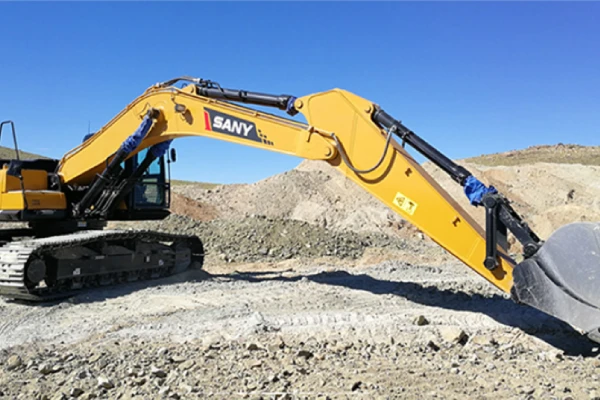Cutting nylon braided hoses may seem like a daunting task, especially if you’re new to it. However, with the right knowledge and techniques, it can be a straightforward process. Whether you’re a DIY enthusiast or a professional, understanding how to cut nylon braided hose properly is essential for various applications.
In this comprehensive guide, we will walk you through every aspect of this task, providing you with valuable insights, tips, and step-by-step instructions.
How to Cut Nylon Braided Hose

Cutting nylon braided hose requires precision and the right tools. Follow these steps to ensure a clean and accurate cut:
Step 1: Gather Your Tools and Materials
Before you begin, make sure you have the following tools and materials on hand:
- Nylon braided hose
- Tape measure or ruler
- A hose cutting tool (e.g., hose cutter or a sharp utility knife)
- Safety glasses
- Gloves
Step 2: Measure and Mark
Measure the length of the hose you need and mark it with a pencil or chalk. Ensure that your measurements are precise, as accuracy is crucial in this process.
Step 3: Put on Safety Gear
Safety first! Before you start cutting, put on your safety glasses and gloves to protect yourself from any potential hazards.
Step 4: Position the Hose
Place the marked area of the hose on a stable surface, ensuring it won’t move during the cutting process. Make sure the hose is straight and taut.
Step 5: Cut the Hose
Using your nylon hose cutting tool or utility knife, carefully cut along the marked line. Apply even pressure and make a smooth, continuous cut. Avoid using excessive force, as it may cause the hose to deform or fray.
Step 6: Inspect the Cut
After cutting the hose, inspect the cut end to ensure it’s clean and free of any frayed edges or burrs. If needed, use a file or sandpaper to smooth out the cut.
Step 7: Attach Fittings
Once you have a clean and precise cut, you can proceed to attach fittings to the hose ends, depending on your specific application.
Tips for Cutting Nylon Braided Hose

- Always use a sharp cutting tool to ensure a clean cut without fraying.
- Measure twice, and cut once. Double-check your measurements before cutting to avoid mistakes.
- Wear safety gear, including safety glasses and gloves, to protect yourself from any potential accidents.
- When using a utility knife, make sure it’s sharp and replace the blade if necessary to prevent jagged cuts.
- Keep the hose steady during cutting to maintain accuracy.
- Avoid cutting at an angle, as it may affect the hose’s performance and seal.
- If you’re new to cutting nylon braided hoses, practice on a spare piece to gain confidence before working on your project.
Choosing the Right Nylon Braided Hose
Before you even think about cutting a nylon braided hose, it’s crucial to select the right one for your specific application. Nylon braided hoses come in various sizes and types, each suitable for different purposes. Consider factors such as the intended use, pressure requirements, and compatibility with fluids when making your selection. Once you have the correct hose, you can proceed with confidence.
Proper Maintenance
Cutting the hose is just one aspect of working with nylon braided hoses. Regular maintenance is essential to ensure their longevity and reliability. Inspect your hoses periodically for wear, leaks, or damage. Replace any damaged hoses promptly to avoid potential issues.
Hose End Fittings
While this guide focuses on cutting the hose itself, it’s worth mentioning that attaching the appropriate hose fittings is equally crucial. Properly installed fittings ensure a secure connection and prevent leaks. Make sure to select fittings that match the hose size and type and follow the manufacturer’s instructions for installation.
Frequently Asked Questions (FAQs)
Can I use regular scissors to cut nylon braided hose?
Yes, you can, but it’s not recommended. Using specialized hose cutting tools or utility knives provides cleaner and more precise cuts.
What should I do if the cut end of the hose is frayed?
If you encounter fraying, use a file or sandpaper to smooth out the edges. It’s essential to have a clean and smooth cut for proper hose performance.
Are there specific safety precautions I should take when cutting nylon braided hose?
Absolutely. Always wear safety glasses and gloves to protect yourself from any potential injuries. Additionally, make sure your cutting tool is in good condition.
Can I reuse a hose that has been cut?
Yes, you can reuse a cut hose by attaching fittings to the cut ends. Just ensure that the cuts are clean and free of burrs.
What applications typically require cutting nylon braided hose?
Nylon braided hoses are commonly used in automotive, plumbing, and hydraulic systems, among others. Cutting may be necessary for custom installations or repairs.
Do I need any special skills to cut nylon braided hose?
No, cutting nylon braided hose is a relatively simple task that can be done by DIY enthusiasts and professionals alike. Follow our guide for step-by-step instructions.
Conclusion
Learning how to cut nylon braided hose is a valuable skill for anyone working with hoses in various applications. By following the steps outlined in this guide and adhering to safety precautions, you can ensure a clean and precise cut every time. Whether you’re tackling a DIY project or a professional job, these techniques will help you achieve optimal results. Now, go ahead and confidently cut nylon braided hoses with ease and precision!




